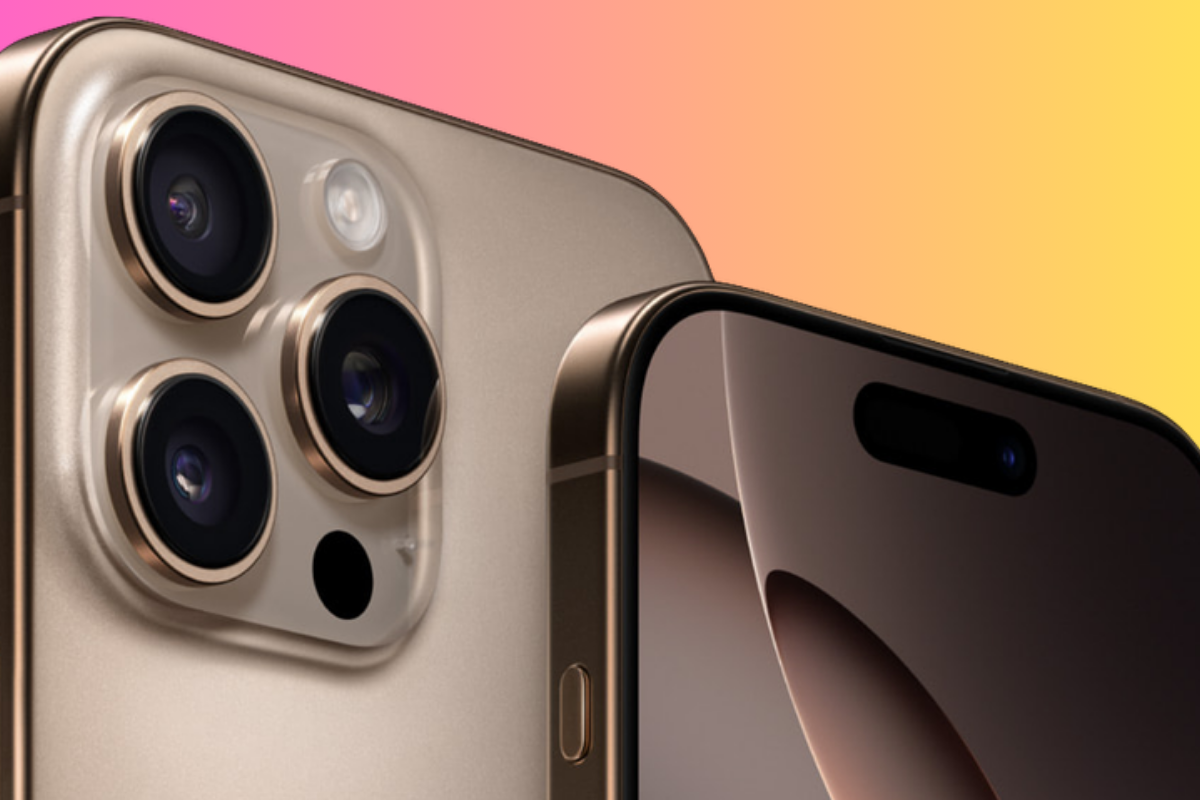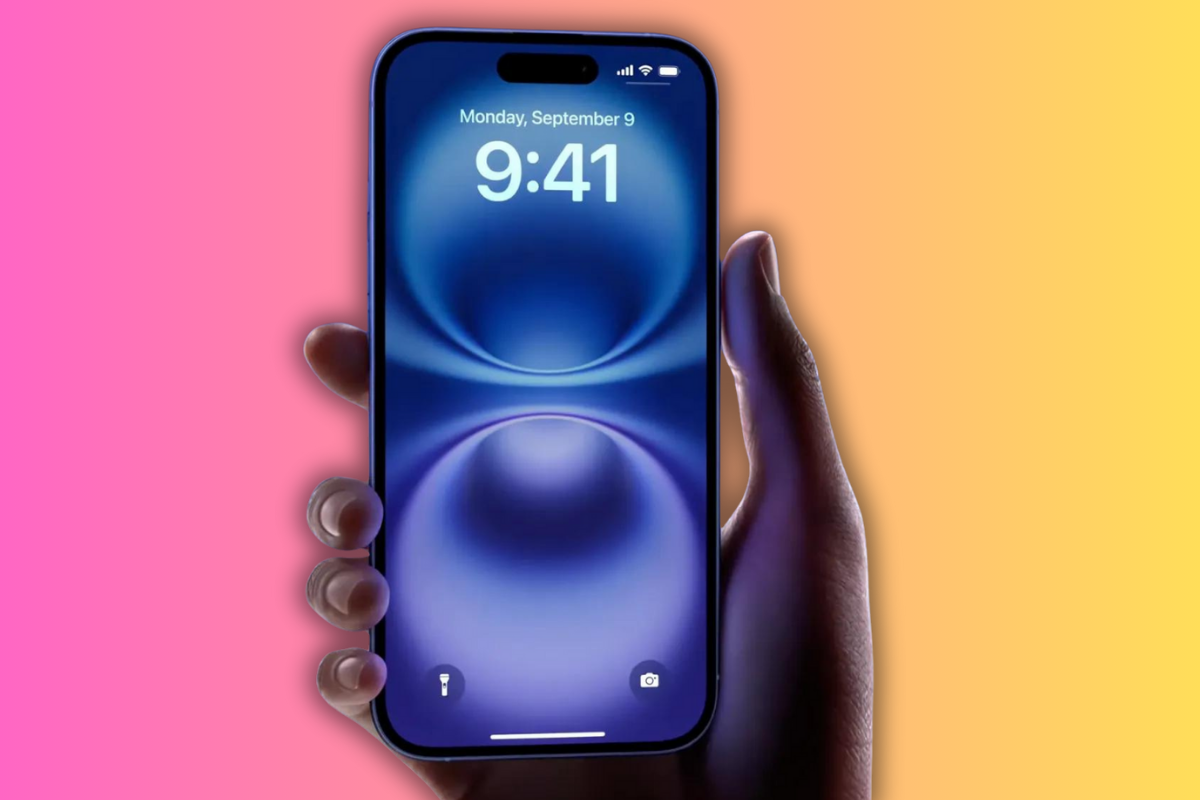Not all iPhone 16 models are made from titanium – here’s what you need to know before you buy one…
Which iPhone 16 Models Are Made From Titanium?
- ✅ The iPhone 16 Pro and iPhone 16 Pro Max are made with titanium.
- 🔲 Titanium Frame – Provides lightweight, durable design.
- ❌ Standard Models – The iPhone 16 and iPhone 16 Plus use an aluminum frame instead.
Is the iPhone 16 Made from Titanium?

If you’re due an upgrade and you want an iPhone that is made from titanium, you’re limited to Apple’s most expensive models – the iPhone 16 Pro and iPhone 16 Pro Max.
Only the iPhone 16 Pro and iPhone 16 Pro Max models feature Apple’s new titanium frame. Like ProMotion displays and advanced camera modules, Apple keeps many of its latest features locked away inside the Pro models.
Titanium isn’t just a marketing gimmick either – although it is a bloody good one. It makes the phone both lighter and stronger when compared to aluminum (which is used on the base model iPhone 16 and iPhone 16 Plus).
The iPhone 16 Pro and iPhone 16 Pro Max are the first iPhones to use titanium. Apple will likely use it on the iPhone 17 Pro and Pro Max too, although it could find its way down to the non-Pro models (but I wouldn’t hold your breath on this count).
Why Titanium?
Titanium has one of the highest strength-to-weight ratios among metals, making it ideal for the Pro lineup’s sturdy yet lightweight design.
Apple uses Grade 5 titanium on the iPhone 16 Pro and iPhone 16 Pro Max. This is the same type of titanium that’s used in the aerospace sector, so it brings with it a host of unique features that make the phones’ way more robust.
This alpha-beta alloy is the workhorse alloy of the titanium industry. Titanium grade 5 has good tensile properties at ambient temperature and a useful creep resistance up to 300°C. Resistance to fatigue and crack propagation is excellent. Like most titanium alloys, Grade 5 has outstanding resistance to corrosion in most natural and many industrial process environments – source
The use of titanium also has an effect the phones’ aesthetics too. Apple used a micro-blasted texture on the titanium which gives the Pro and Pro Max models a unique, polished look that distinguishes them from, say, the iPhone 15 Pro / Pro Max and the iPhone 16 base models.
What About The Standard iPhone 16 Models?
For the iPhone 16 and iPhone 16 Plus, Apple has chosen anodized aluminum for the frame, a material known for its balance of durability, weight, and cost-effectiveness. While slightly heavier and not as strong as titanium, anodized aluminum still offers impressive resilience in real-world applications.
Here’s how it holds up in daily use:
Everyday Durability
Anodized aluminum is commonly used in consumer electronics because it’s relatively scratch-resistant, corrosion-resistant, and can withstand regular wear and tear. The anodizing process adds an extra layer of protection by converting the metal’s surface into an oxide layer, which not only enhances its durability but also allows Apple to give it a unique finish. This makes aluminum ideal for withstanding the typical knocks and scratches that phones experience in pockets, bags, and day-to-day handling.
Real-World Benefits
In practical terms, the anodized aluminum used in the iPhone 16 and iPhone 16 Plus performs well in several common scenarios:
- Drop Resistance: While titanium is more resilient against impacts, anodized aluminum still provides enough durability to protect against minor drops. For most users, this is more than adequate, as aluminum absorbs shock without easily denting, making it a durable option for general usage.
- Lightweight Design: Although aluminum is slightly heavier than titanium, it is still relatively light, allowing Apple to maintain a comfortable weight in the iPhone 16 and iPhone 16 Plus. This ensures that the devices remain manageable for one-handed use and don’t feel cumbersome in pockets or bags.
- Corrosion Resistance: The anodizing process enhances aluminum’s natural resistance to corrosion. This is especially beneficial for users who live in humid or coastal environments where metals are more prone to rust and corrosion. Unlike untreated metals, anodized aluminum resists damage from moisture, sweat, and environmental factors, maintaining its finish over time.
- Cost-Effective Durability: By using anodized aluminum, Apple can deliver a durable frame while keeping the production costs lower than titanium, making the iPhone 16 and iPhone 16 Plus more affordable while still offering solid build quality. This balance of cost and durability is a reason why aluminum remains a popular choice for premium yet non-Pro devices.
Comparison to Titanium
While titanium is undeniably stronger, especially in extreme conditions, aluminum provides an excellent balance between cost, weight, and durability for most users who need a reliable smartphone for everyday activities.
Titanium shines in scenarios requiring ultra-high strength or impact resistance—such as for users in physically demanding environments or those who prioritize the lightest possible weight. However, for the majority of users, anodized aluminum delivers enough durability for a solid, long-lasting smartphone experience.
While the base models miss out on the benefits of titanium, you still get plenty of improvements over the iPhone 15 and iPhone 14 series. All iPhone models in the 16 series now feature Dynamic Island, for instance, and while ProMotion is still a Pro-only feature, the inclusion of the A18 chipset on the base models brings a whole host of performance improvements.


